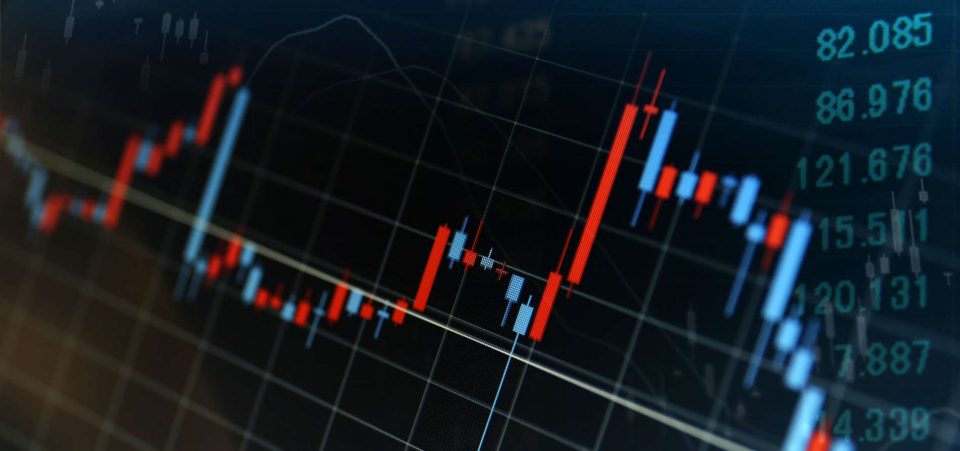Will the U.S. Economy Collapse in 2019?
We could be closing in on a U.S. economic collapse in 2019.
The statement above may sound way too pessimistic and like something not discussed in the mainstream, but it’s possible. It can’t be stressed enough; 2019 could be a very critical year for the U.S. economy.
You see, right now, no one seems worried. And they don’t really have many reasons to be, either. The data on the surface looks great, to say the least: the stock market is still trading close to its all-time highs, unemployment rate in the U.S. economy is low, companies are reporting solid earnings, and the list goes on.
The data on the surface may look great, but don’t forget that the devil is in the details. Right now, the data under the surface is taking a turn for the worse. A widespread slowdown could be ahead, and it could bring down the stock market, create massive job losses, and hurt the average American.
There are five factors that should be watched closely, as they could be the reasons we see an economic collapse in the U.S. in 2019.
#1 Growing Government Debt
U.S. national debt is ballooning. It’s a major problem no one is currently talking about, despite potentially being a key factor in the next U.S. economic collapse.
As per the most recent data, the U.S. national debt stands at $22.02 trillion. (Source: “The Daily History of the Debt Results,” TreasuryDirect, last accessed March 7, 2019.)The chart below plots the U.S. national debt. At the beginning of 2009, this debt stood at around $11.0 trillion. And now, a decade later, that amount has doubled. (Source: “Federal Debt: Total Public Debt,” Federal Reserve Bank of St. Louis, last accessed March 7, 2019.)
You may think that’s a massive amount. Well unfortunately, it could get much bigger.
Every government around the world usually aims to have a balanced budget. The U.S. government, however, continues to spend without remorse, incurring massive budget deficits. And keep in mind that every time the U.S. government incurs a budget deficit, it has to go out borrow money.
Consider this: in the first four months of fiscal year 2019, which began in October 2018, the U.S. government has incurred a budget deficit of $310.25 billion. In the same period a year ago, its budget deficit was $175.71 billion. That means U.S. government spending has soared over 76%. (Source: “Monthly Treasury Statement,” U.S. Department of the Treasury, last accessed March 7, 2019.)
Here’s the more troubling part: there is no budget surplus or balanced budget in sight.
According to the Congressional Budget Office (CBO), until 2029, the U.S. government is only expected to incur deficits. The U.S. budget deficit is expected to be $897.0 billion in fiscal 2019. It is also anticipated to hit $1.12 trillion by 2022 and remain in that range until 2029. (Source: “Budget and Economic Data,” Congressional Budget Office, last accessed March 7, 2019.)
Mind you, these projections by the CBO are based on good conditions; they don’t really account for any sort of severe slowdown in the U.S. economy. So if there is a slowdown, the deficit figures could get much bigger. And don’t forget: the bigger the U.S. debt load gets, the bigger the interest payment would be. By 2029, interest expense on debt is expected to be over $900.0 billion. So, why could the U.S. government debt lead to an economic collapse in 2019?
Debt is not always a bad thing. In order to grow an economy or invest in the future, governments sometimes spend money. But if it continues to grow and there’s no sign of it declining anytime soon, it limits possible economic growth. The worst part is that if the debt load continues to grow, those who have been lending money to the U.S. government could question its ability to pay back the debt. Imagine this: the U.S. economy is slowing down, and the government needs money to boost a few sectors. Won’t the creditors question the U.S. government’s intentions?
Right now, the U.S. government is paying back its debt by borrowing more. This is dangerous.
We could see an outright economic collapse scenario play out if all of a sudden creditors to the U.S. economy say they want their money back or that they won’t lend any more until the U.S. pays higher interest. That day would be the end of the U.S. dollar, with the economy possibly coming to a complete halt and consumers suffering immensely.
#2 Surging U.S. Consumer Debt
Seventy percent of the U.S. gross domestic product (GDP) is consumption. A major portion of this consumption is consumer spending. And if consumer spending drops a little, the economy is in trouble. U.S. consumers have been behind every slowdown and growth the U.S. economy has seen. If they pull back on spending, a recession follows. If they spend more, the U.S. economy grows.
Over the past few years, we saw an increase in consumer spending. Just look at the chart below, which plots the personal consumption expenditure, a measure of consumer spending:

(Source: “Personal Consumption Expenditures,” Federal Reserve Bank of St. Louis, last accessed March 7, 2019.)
However, there was just one problem: consumer spending was increasing on the back of consumer debt. Americans spent more by borrowing more money. Their incomes didn’t grow as much as their debts.
In the fourth quarter of 2018, household debt in the U.S. increased for 18th consecutive quarter, standing at $13.54 trillion. Americans now have more debt than they just before the previous financial crisis. (Source: “2018:Q4, Quarterly Report On Household Debt And Credit,” Federal Reserve Bank of New York, last accessed March 7, 2019.)
Debt impacts consumption.
With this in mind, there are few things to consider.
If Americans have accumulated debt, a large portion of their income could be going towards servicing debt. So, going forward, they could be spending much less on things they want.
Don’t you think that would impact the U.S. economy? It could send the economy into a recession very quickly.
Beyond this, one has to wonder what will happen if banks will end up pulling back on lending to consumers and Americans start missing out on their loan payments. It could lead to a lot of defaults and bankruptcies. Further, the banking system could be in trouble. A financial crisis could be at hand, leading to a U.S. economic collapse.
#3 Interest Rate Uncertainty
Between 2015 and late 2018, the Federal Reserve had one very clear and strong message for the investors and other market participants: that interest rates were going higher.
It followed on its promise.
We saw first rate hike after the financial crisis of 2008-2009, in late 2015. Several other hikes followed.
In 2018, something happened to the Fed: its tone changed a bit.
By early 2019, the Federal Reserve had changed its rhetoric completely. In February, the Fed said it will be patient going forward and hinted that there were uncertainties. This was a very drastic change in tone that no one really expected.
Now, it is a question of if the Federal Reserve could even lower rates.
This interest rate uncertainty could be very dangerous. And there’s one thing that must be watched carefully as a result: the derivative market.
At the end of third quarter of 2018, the top 25 banks had derivatives worth $207.0 trillion. And no, this is not a misprint. (Source: “Third Quarter 2018: Quarterly Report on Bank Trading and Derivatives Activities,” Office of the Comptroller of the Currency, last accessed March 7, 2019.)
What are derivatives? They are contracts between two parties based on certain assets. Derivatives are often used to hedge portfolios, but they could also be used to speculate.
As it stands, of the $207.0 trillion in derivatives at the U.S. banks–roughly 76%, or about $157.0 trillion worth–are based on interest rates.
Don’t forget that there are two parties involved when it comes to one derivative. It’s possible that some banks could be on the wrong side.
If we just assume just 10% of the derivatives go sour because of interest rate uncertainty, what do you think will happen? It’s possible we end up with a financial crisis that leads to a U.S. economic collapse in 2019.
# 4 Slowing Global Economy
The U.S. is not an island, both figuratively and literally. It is highly correlated with what happens in the global economy.
If the global economy is facing headwinds, the U.S. economy suffers as well.
As it stands, the global economy is facing a lot of headwinds, which could be another factor that causes an economic collapse. For perspective, check out the the Baltic Dry Index (BDI) below. This index serves as an indicator of demand in the global economy. It’s essentially a shipping rate index, but when it drops, it means global demand for dry goods is falling. If the BDI bounces higher, it means demand is increasing and global growth is likely.

Chart Courtesy of StockCharts.com
In August of 2018, the BDI stood at above 1,700. Over the past few months, it crashed to 664. This is a decline of over 60%. At the very least, the BDI is saying that the global economy is decelerating at a dangerous pace. But the BDI isn’t the only indicator suggesting the global economy is in dire state.
Look at the major economic hubs, and you will see how bad the conditions really are.
The eurozone is struggling to show any growth. In fact, the European Central Bank recently came out and said there are a lot of uncertainties in the region and that growth could be lower than originally anticipated.
It doesn’t end there. China has lowered its growth estimates. The Canadian economy is stagnant. Japan has nearly avoided a recession. And Austria and New Zealand are reporting poor economic data.
Emerging market economies are in a dire state, seeing their currencies fall against the U.S. dollar.
If major hubs in the global economy slow, know that it could impact the U.S. economy as well.
For instance, U.S. companies export a lot to other economies. In 2018, the U.S. exported $2.5 trillion worth of goods and services. An economic slowdown Slowing would hurt this total immensely.
Slow global growth could also result in job losses, business failures, and more. And needless to say, it could be a major catalyst for the U.S. economic collapse.
#5 U.S. Political Environment
This is not a news to anyone: the U.S. government is picking a lot of fights globally.
One of the reasons President Donald Trump got elected was that he promised to fight for America. He said he would get fair deals and make sure other countries pay their fair share.
Sadly, as it stands, we are seeing an outright global trade war. The U.S. government has imposed tariffs on Chinese goods, for one.
But that’s not all. The U.S. is also picking fights with its so-called close allies, imposing duties on European and even Canadian goods.
What could this do? Trade wars never end well. Over time, there are more victims than there are winners. If the Trump administration continues to do this, there could be retaliation from other countries.
A lot of businesses and sectors could be on the line if that happens, meaning this trade war could lead to a U.S. economic collapse.
Looking from within, there’s a massive deadlock.
Over the past year, there hasn’t been any major legislation. This is a problem. Investors don’t really like when the government is inefficient and nothing is getting done. They tend to panic and sell when this sort of scenario plays out.
If there’s a broad market-sell off, it could be just bad. It may even be the cause of an economic collapse.







